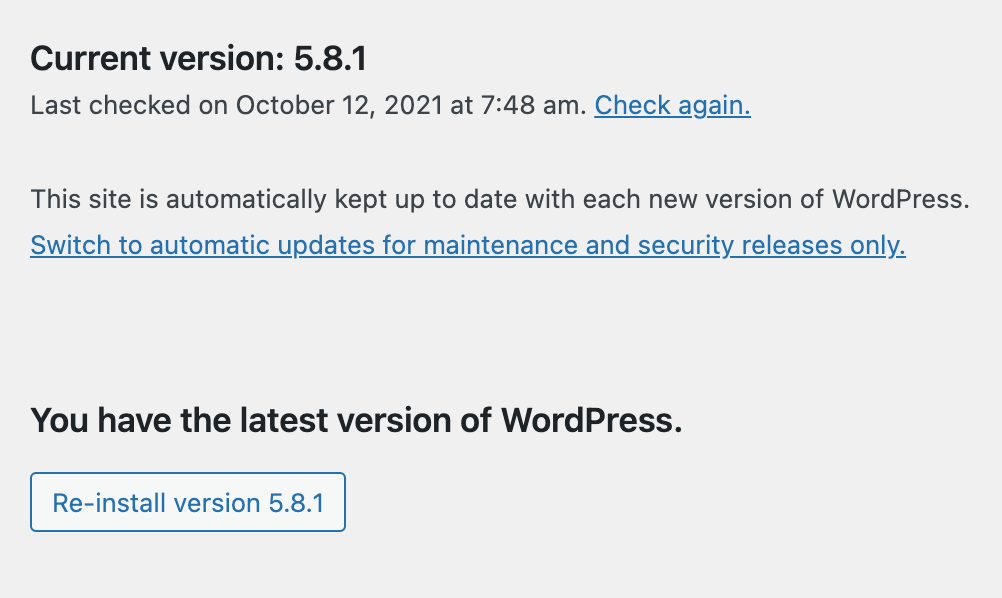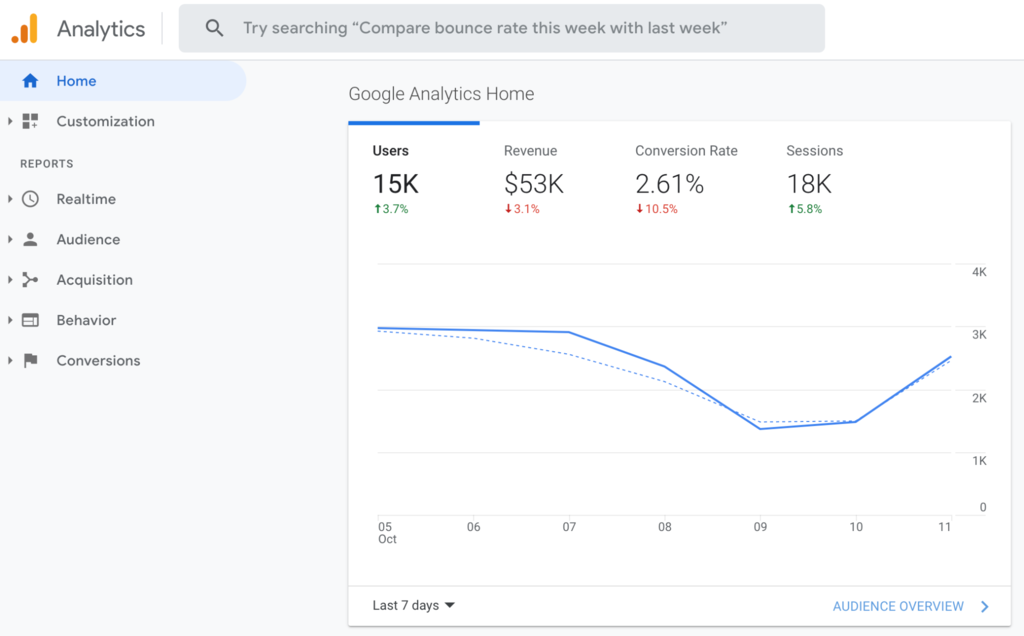How to Sell Website Maintenance Services + Pro Tips

Businesses increasingly use websites to promote their services and products. Thus, they need to be maintained regularly to ensure a good user experience and avoid security issues.
However, the problem is that web maintenance can take a lot of time, and not every company has a dedicated person or team to take care of it. In this case, purchasing a website maintenance service is an excellent choice.
If you’re a freelancer or work in an agency that focuses on web design and development, adding website maintenance to your list of services is a great idea to bring an additional stream of income.
In this article, you’ll learn the essential aspects of website maintenance services. We will cover the benefits of offering them, what should be included in the maintenance package, tips, tricks, and examples from existing web maintenance companies.
Why Sell Website Maintenance Services?
Website maintenance is an essential service. Its implementation improves the site’s performance, which directly impacts the site’s traffic growth, SEO performance, and conversion rate.
For example, a poor user experience, caused by a poorly designed site, slow loading speed, or glitches, can make 50% of users leave the site and go to a competitor instead.
It can hurt the company’s credibility and cause potential revenue losses. Fortunately, these issues can be prevented and solved with regular web maintenance.
Investing in a web maintenance plan is also beneficial in the long run. It ensures experts take care of the website, letting site owners save time and focus on developing and running their business.
For developers or people who want to start a tech business, there are several reasons why selling website maintenance services can present lucrative business opportunities:
- Source of recurring revenue – as website maintenance is a continuous service, it’s a good way to earn a stable and consistent income online.
- It’s profitable – depending on your pricing strategy, website maintenance can bring in a sizable profit, especially if you automate the tasks or use white label services.
- Opportunity to resell hosting packages – a website maintenance plan usually includes web hosting management, so you can join a hosting company’s affiliate program and earn a commission for every sale.
- Boost client retention – if you build websites, for example, you can nurture your current clients by offering web maintenance as an extra service. This will help your business stand out and get more clients as there’s a possibility of them recommending your services to their colleagues and acquaintances.
What Should You Include in a Website Maintenance Package?
Now it’s time to decide what services to include in your maintenance package. Here are some of the most common services you can offer:
1. Web Hosting Management
This service includes taking care of clients’ website hosting and ensuring that everything related to it, such as the domain name, hosting plan, and SSL certificate, is set correctly and active.
Remind clients that web hosting requires regular attention. If a site’s hosting plan expires, its data will be deleted. Moreover, if its domain expires, the site and other domain-related services will become inactive.
You can also offer a comprehensive service with hosting for agencies to manage clients’ accounts and carry out scheduled maintenance.
Looking to host websites for your clients?
Check out our Guide to Hosting Websites for Clients.
2. Website Security
Cyberattack methods are constantly evolving, causing various problems for website owners.
Website security measures will ensure that no website data is stolen, leaked, or copied by unauthorized parties. This is especially important if your client’s website holds lots of confidential information like personal and payment details.
This service should include security scans, troubleshooting security issues, and installing firewalls to keep hackers at bay.
If your client uses a content management system like WordPress, you’ll also need to install new security updates and patches.
3. Website Backups and Recovery
Regular backups are essential to ensure your client can recover their site data in case of an incident such as a cyber attack or system error.
The backup schedule depends on how often the website’s content is updated. If there are new posts every day, then daily backups will be necessary. Meanwhile, weekly backups should be sufficient if the website publishes new content one or a few times a week.
Note that you’ll also need to preview the backup version of your client’s website to ensure that all the necessary data for restoring the site is there.
4. Software Updates – CMS, Themes, Plugins
No matter which Content Management System (CMS) a website uses, updates ensure its smooth functionality. If someone fails to update their site regularly, they will face technical errors, compatibility conflicts, and security issues. Some of the main aspects of a website that require regular updates are its theme, plugins, and the platform’s core software.
Your clients might find it overwhelming to keep track of all that, especially if their websites use many plugins and other tools.
A software update package should include bug fixes and feature improvements. You’ll have to check whether there are updates available and execute them, perform regular script updates, and resolve errors that might occur after the update to prevent website downtime.
5. Technical Support
Providing technical support means having a dedicated team to answer queries about common website maintenance issues.
Here are some of the tasks that a technical support team might cover:
- Answering queries about technical issues.
- Troubleshooting user access issues.
- System training.
- Solving data or content errors.
Problems like server downtime or cyber attacks can happen anytime, so it’s necessary to be ready to solve them by providing 24/7 technical support.
Alternatively, if you just started your website maintenance company, get a partner or outsource a team to expand the service availability.
6. Website Content – Updates, Changes, New Content
New content helps attract visitors to a website, boosting its traffic and profitability. However, companies and website owners may not have the time to update their site content regularly.
Website content services may include tailored copywriting, information updates, image optimization such as using progressive JPEG, and applying WordPress SEO practices to improve page ranking on search engine results pages.
Remember that search engine algorithms are continuously changing, so you have to keep up with the latest trends.
7. Design and Development Changes
Help your clients understand that design and development improvements will benefit their company in the long run. If a website has a confusing navigation structure, visitors will likely decide to leave the site within the first 50 milliseconds.
Provide a service to fine-tune your client’s website in terms of design and development so that it can stand out from the crowd and stay relevant.
For example, implementing a responsive design will make the website optimally accessible on any device, boosting its engagement rate.
8. Website Analytics
Website analytics enable you and your clients to plan out actionable strategies and decide whether you need to make changes to the website based on user behavior and activities.
By employing website analytics, you can provide in-depth reports about marketing campaigns’ performance on different channels to help the client see how their website performs.
In your reports, include easy-to-understand metrics and goals, suggestions on increasing traffic, generating leads, and other key performance indicators.
Tips and Tricks for Selling Your Website Maintenance Services
As with any other business, promoting your web maintenance services is essential to attract new clients. Thus, we’ve gathered some tips and tricks to help you sell your services.
1. Provide Comprehensive Reports
The clients of your website maintenance service will most likely expect regular reports about their websites. Providing them also helps establish transparency and build customer loyalty.
In general, the report should include the following aspects:
- Traffic reports – insights into the website’s traffic sources, acquisition channels, new and returning clients, and top-performing pages.
- Security reports – give details of the security measures you’ve implemented to protect the site, from regular monitoring to security patches. You should also outline the strategies to prevent future security issues.
- Actionable advice – share suggestions on which part of the site needs improvement to reduce bounce rates and boost conversions, for example.
- Summary of the web maintenance services – list all the website maintenance services done.
These reports should be sent to your clients weekly or at other regular intervals so they can keep track of the site maintenance progress and take immediate action if there’s any issue.
2. Research the Market
Conducting market research will give you insights into competing website maintenance services, trending products, and your target audience.
It will help you identify any gaps in the website maintenance service industry that you can fill to make your business stand out.
To begin, determine who your competitors are and take note of their selling and pricing strategies. Then, look into potential clients. Find out their needs by sharing forms and questionnaires – start with your current clients, if possible.
Pro Tip
Some people may not be aware that it’s possible to outsource maintenance services safely. This is especially true for non-technical clients and clients with old websites, regardless of the business’s size.
Take advantage of your social media channels to increase brand awareness and promote your company. If you are not sure how to begin, check out our social media webinar.
Tools like Google Trends will help you find which keywords related to website maintenance people are searching for.
Once you’ve gathered all the data, identify your unique selling proposition (USP) and adapt your website maintenance plans accordingly. Highlight the benefits of your website maintenance packages that people cannot find in other services.
3. Have a Professional Website
Creating a professional and impeccable website is essential to establish your business’s credibility.
First, buy a custom domain that properly represents your website maintenance service company, as it will be the first impression visitors have of your brand.
If you find it hard to create one, try using domain name generators to help you brainstorm. Aim for a .com extension as it’ll help present your website as business-oriented and credible.
Also, include detailed information on what your company does and the service packages so that potential clients know if your services are suitable for them.
Furthermore, provide your company’s complete contact information, such as its email address and phone number, to let visitors easily book your services and dispel any doubts.
4. Set Prices
Get the website maintenance cost right by defining the critical expenses of your company. This includes the hours of work, operational expenses, acquisition costs, and your team’s salaries. Also, take into account what kind of service and support you provide, so you won’t end up underselling it.
In general, website maintenance services start at $29/month and can cost up to hundreds of dollars. Many sellers think lowering their prices will set them apart from the competition, but that’s an unsustainable strategy.
All in all, be honest and fair with your pricing. Work your way towards providing the best service possible to demonstrate that your site maintenance packages are worth their price.
5. Be Transparent and Professional
Before signing any contracts, communicate your terms and conditions to your clients to make sure they have realistic expectations.
It will prepare them for any unforeseen circumstances. For example, website updates and backups cannot guarantee that a website will be immune from problems. Maintenance, however, is the best preventive action to protect it.
The goal of website maintenance is to ensure that the site can function properly and securely, and that if any problems occur, you will troubleshoot them.
However, inform your clients that you’re not responsible for issues caused by negligence on their side.
Conclusion
Websites need regular maintenance to work optimally. Otherwise, they may encounter technical errors that can cost a lot of time and money to fix.
However, not every person or company has the time and ability to deal with it. Website maintenance businesses not only take care of all maintenance, but also tailor the process according to each site and client’s needs.
Additionally, it’s an excellent business opportunity since the demand for it is constant. The most common website maintenance services include:
- Web hosting management.
- Website security.
- Website backups and recovery.
- Software updates.
- Technical support.
- Website content updates and creation.
- Design and development changes.
- Website analytics.
Before you start, make sure to research the market extensively to determine your target audience. Build a professional website to boost your company’s credibility and provide prices so potential customers can choose a plan that best suits their needs.
Additionally, always be transparent and professional with your clients. Provide clear terms and conditions, reports, and excellent customer service.
Now that you’ve learned all the steps to create a successful website maintenance company, it’s time to start your business.




